AI transformation, cybersecurity strides, data integrity, and immersive experiences lead enterprise priorities.
The tech landscape experienced a seismic shift in 2023, marked by the rise of transformative technologies such as Generative AI, a growing emphasis on automation, and the delivery of exceptional digital experiences. As GenAI quickly moves from an emerging technology to a productivity essential tool, CIOs and enterprises find themselves navigating its diverse use cases and innovative applications amidst a cautious approach, addressing challenges posed by emerging threats and skillset gaps.
For CIOs, 2023 posed the formidable task of crafting a resilient technology roadmap amid economic uncertainties. GenAI, a hot topic among CIOs, is set to integrate seamlessly into business strategies in 2024, aligning with Gartner’s predictions.
A significant milestone of the year was the enactment of the Digital Personal Data Protection (DPDP) Act by the Indian Parliament on August 11, 2023. This legislation reshapes India’s data management framework, underscoring the pivotal role of Data Protection Officers (DPOs) in ensuring compliance and upholding data privacy. With plans to make the Digital Personal Data Protection Law live in 2024, technology leaders will remain at the forefront, deciphering the impact of these laws on the enterprise ecosystem and determining the necessary steps for preparedness. Simultaneously, the US government and the European Union are in the advanced stages of implementing robust laws to regulate AI, presenting several challenges and opportunities for the growth of technologies like AI.
Amidst these dynamic shifts, CIOs and CISOs find themselves at the crossroads of adapting to technological advancements. This edition delves into the top tech focus areas for enterprises in 2024, drawing insights from discussions with influential CIOs and industry leaders.
1. AI to drive intelligent transformation
In 2024, integrating artificial intelligence (AI) and machine learning (ML) will fundamentally transform customer experiences and refine risk management across diverse industries. Beyond external customer interactions, such as AI-powered chatbots, these technologies are now pivotal for internal processes and risk assessments in various sectors.
Customer engagement and predictive analysis:
For many CIOs, The emphasis has shifted away from basic applications such as sentiment analysis to more complex tasks such as customizing investor communications and generating detailed analytical reports. This headway highlights the growing reliance on AI and ML for comprehensive customer profiling and predictive analysis, allowing businesses to effectively anticipate and mitigate potential risks.
According to Ananth Subramanian, EVP, and Head IT, Kotak Mahindra Asset Mgt, “While we had started consuming some of these (AI) services to do sentiment analysis, we are now exploring areas where we could customize responses to investors’ emails. Other use cases have generated summarized reports after feeding multiple inputs on a specific stock. We have also started adopting platforms to improve our IT risk monitoring areas. These include correlation with system metrics to provide UEBA and look at possible anomalies that can come up in the future.”
Global impact of data-led businesses: Globally, data-led businesses are poised to disrupt the landscape with smart strategies harnessing data for purposeful gains. AI is reshaping organizational operations, customer interactions, and overall value creation. AI initiatives drive differentiated strategies in customer engagements, business and strategic planning, research and development, financial operations, and supply chain management, spanning industries.
Embarking on this AI journey, KRC Murthy, Senior President & Head IMG – Business & Digital Technology Solutions at Yes Bank, shares, “AI and machine learning have become integral components of our business strategy, standing the test of time as we extensively leverage them across our entire end-to-end customer journey. This utilization extends beyond external customers to encompass internal end-users, aligning with the prevailing trend. Our AI journey enables comprehensive 360-degree customer profiling, contributing significantly to our business trajectory.”
Leveraging automation for cybersecurity:
While AI-powered security tools have been increasingly adopted for threat detection and response, the industry is also dealing with challenges, such as growing false positives when new data doesn’t match historical patterns, posing a challenge for these tools and solutions.
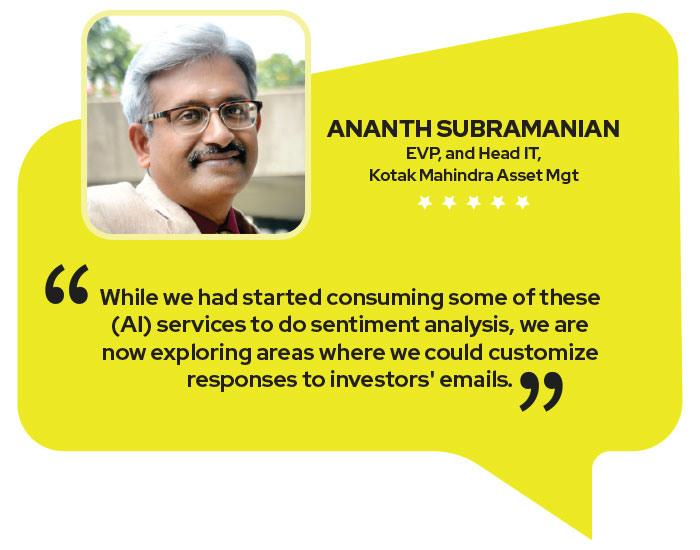
Looking ahead to 2024, advanced authentication methods such as AI biometrics are expected to add an extra layer of security to the enterprise ecosystem. The role of automation and orchestration is also likely to grow in streamlining incident response, reducing manual intervention and response times.
According to Harshad Mengle, CISO at Tata Chemicals Ltd, “AI and ML algorithms analyze vast datasets to identify patterns and anomalies, improving the ability to detect potential threats. Additionally, blockchain enhances data integrity, while automation and orchestration streamline incident response, reducing manual intervention and response times. Integrating advanced authentication methods, such as biometrics, also bolsters security measures. These technologies collectively fortify security systems against evolving threats.”
AI’s utilization in physical security, especially through video analytics and facial recognition in surveillance, is on the rise. The financial and healthcare sectors are exploring the deployment of AI-based tools for fraud detection and safeguarding patient data, respectively. In manufacturing, AI is anticipated to take a central role in surveillance and predictive maintenance, proactively mitigating risks on factory floors. The retail sector experiences the positive effects of AI in curbing shoplifting and fraud through smart cameras and transaction analysis, showcasing the widespread impact of AI on industry-wide security.
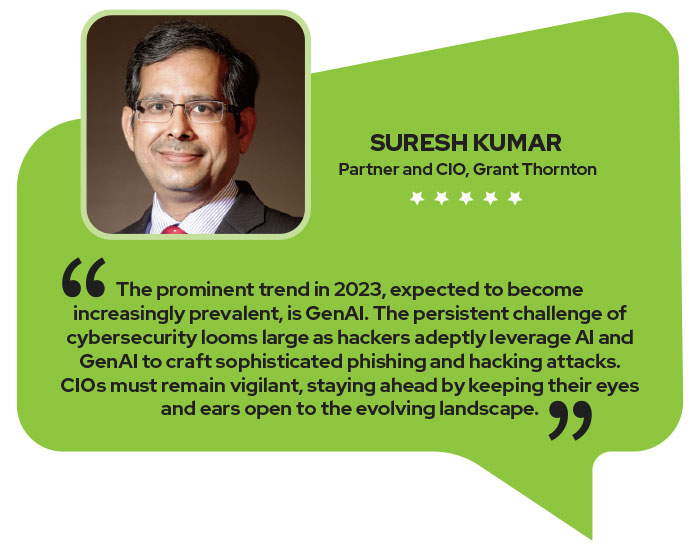
Satyavrat Mishra, Head – Corporate IT & Group CISO, Godrej Industries, said “So I think in 2024, our key focus is going to be, you know, data, AI, ML, and the use of Gen AI to improve overall employee productivity. Data, as you know, has increased over time, and it is crucial to use this acquired data to run advanced algorithms, etc., to derive value. Therefore, must take it to the cloud and use some of the new edge pass solutions, either in Azure or AWS, and then build dashboards and provide insights to the business. Also, since AI and ML are going to play a very important role, especially in organizations like consumer products, etc., right? Because the data volumes are very large.”
Natural Language Processing (NLP): NLP advances enhance AI’s language understanding. In 2024, expect sophisticated models, emotional AI, and multimodal interactions to revolutionize conversational AI. Real-time translation and contextual understanding intensify.
Kapil Mehta, Sr. Director, Technology Solutions of Visionet, highlights immersive experiences through diverse communication modes, emphasizing the importance of real-time language translation in conversational AI. Improved contextual understanding enables chatbots to maintain longer conversations, offering personalized responses based on historical interactions.
Across organizations, varying adoption stages of AI and ML reflect a universal acknowledgment of their indispensable role in the future success of business intelligence.
2. Democratization of Gen AI: transformative shifts and cautious optimism
Generative AI, driven by revolutionary tools like ChatGPT, has swiftly moved beyond mere buzzword status, marking a business imperative within just over a year since its launch. A 2023 study from the University of Pennsylvania reveals a potential impact on approximately 80% of the US workforce, with at least 10% of their tasks influenced by large language models (LLMs), foundational to machine learning (ML) algorithms for generative AI.
From experimentation to strategic integration: The year 2023 represents a key turning point in the evolution of GenAI, transitioning from experimental phases to more strategic and impactful applications. As Generative AI becomes increasingly woven into core business strategies and daily workflows, the shift from technical fascination to intentional and strategic integration signals the onset of a new era—’ intentional AI’—addressing real-world demands and fostering substantial business growth.
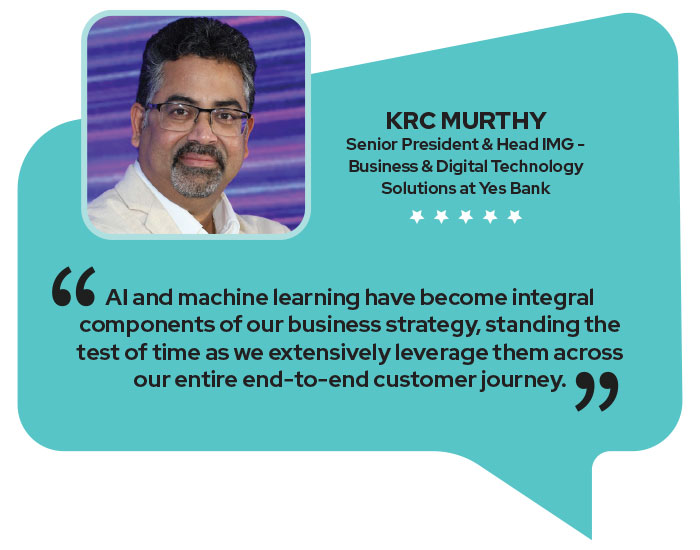
Deepak Bhosale, AVP-IT at Asian Paints, emphasizes the differentiating role of Generative AI, exerting a disruptive influence across personal and corporate lives. Revolutionary technologies like ChatGPT are setting new trends in enterprises, catering to massive customer demand and creating human-like capabilities.
CIOs anticipate a strategic application of AI and automation by a broader range of organizations, specifically in back-office and shared-service functions, with the aim of enhancing productivity and efficiency.
According to Suresh Kumar, Partner and CIO, Grant Thornton, “the prominent trend in 2023, expected to become increasingly prevalent, is GenAI. The persistent challenge of cybersecurity looms large as hackers adeptly leverage AI and GenAI to craft sophisticated phishing and hacking attacks. CIOs must remain vigilant, staying ahead by keeping their eyes and ears open to the evolving landscape.”
Overall, organizations, regardless of size, will persist in exploring how generative AI can provide a competitive edge, enhance customer value, and drive success. Amit Luthra, Managing Director, India, Lenovo ISG, underscores the pivotal role of Large Language Models (LLMs) in powering Gen AI, transforming natural language understanding, and revolutionizing customer interactions.
Global impact and economic potential: A prevailing consensus within the industry is that GenAI will fundamentally reshape the organizational structure and operations of businesses. In 2024, tech honchos expect a defining year where GenAI will undergo further democratization. Organizations will witness the rapid emergence of real-use cases, accelerating the pace at which their teams can redirect efforts toward higher-value work that aligns seamlessly with future business essentials.
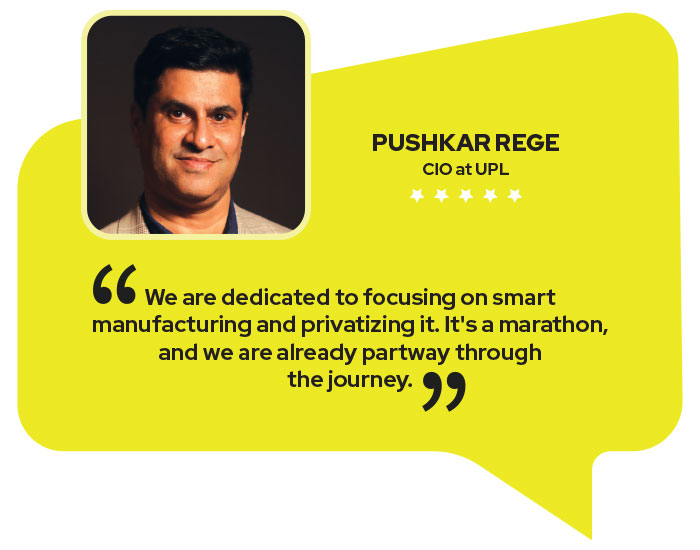
On a global scale, McKinsey reports that Generative AI could potentially contribute between $2.6 trillion and $4.4 trillion annually across 63 specific use cases, amplifying the overall impact of AI by 15-40 percent. These estimates could double with the seamless integration of generative AI into existing software.
Pushkar Rege anticipates that the IT function will eventually transition into an AI function, showcasing the rise of Gen AI. Dhananjay Ganjoo, Managing Director for India and SAARC at F5, looks into the future, foreseeing the increased role of AI in enhancing real-time decision-making, addressing security concerns, and improving search engine outcomes. The strategic integration of AI into API testing is poised for widespread adoption in 2024, ensuring robust performance. These collective perspectives highlight the transformative impact of Gen AI across diverse sectors and the cautious optimism surrounding its future applications.
According to Deloitte’s Tech Trends 2024 report, the foreseeable future may usher in a scenario where businesses find it increasingly seamless to reap the rewards of GenAI within their industries. This anticipation is driven by the emergence of models trained on more specific data, marking a departure from the current trend where AI models are constructed upon foundational models that were trained on general-purpose data.
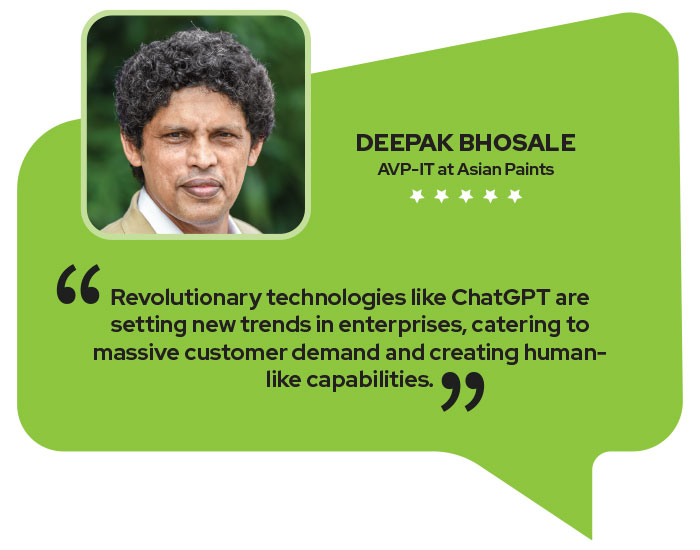
3. Focus on data integrity, trust, and advancing cybersecurity skillsets
As businesses expand their digital operations, CIOs are increasingly prioritizing data integrity, fostering trust, and enhancing their teams’ cybersecurity skills. In 2023, organizations embraced advanced security practices such as vulnerability assessments, penetration testing, and the implementation of multi-factor authentication. This reflects a proactive approach to mitigating digital threats.
Impact due to new AI models: According to Gartner, the democratization of access to AI has made the need for AI Trust, Risk, and Security Management (TRiSM) even more urgent and clear. Without guardrails, AI models can rapidly generate compounding negative effects that spin out of control, overshadowing any positive performance and societal gains that AI enables. Gartner predicts that by 2026, enterprises that apply AI TRiSM controls will increase the accuracy of their decision-making by eliminating up to 80% of faulty and illegitimate information. AI tools have provided cybercriminals with a strategic advantage, enabling them to deceive their targets by impersonating others. This makes it exceedingly challenging for users to discern and identify potential threats.
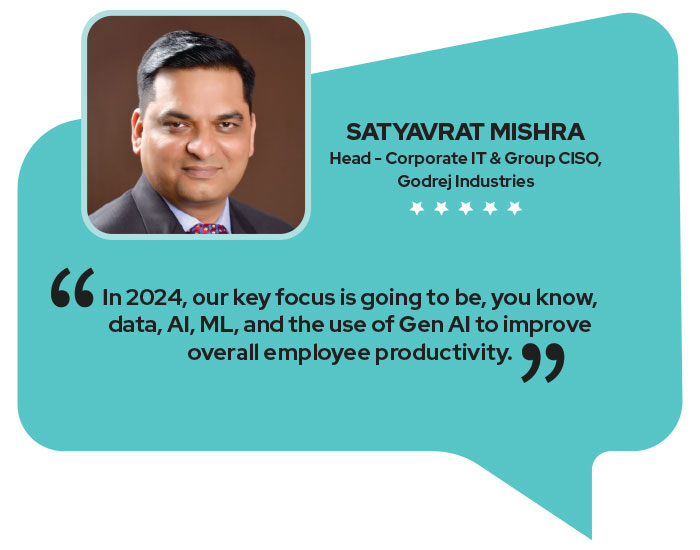
Cybersecurity and Digital Technology Expert Kanishk Gaur notes that, in the face of increasingly sophisticated digital threats, the focus will be on implementing multi-layered security strategies. This includes advanced threat detection systems, regular cybersecurity audits, and employee training programs to ensure vigilance and preparedness against potential cyber threats.
In 2024, the industry expects widespread adoption of the zero-trust security model, underscoring a commitment to continuously evolving security strategies. This trend indicates a shift from traditional, perimeter-based security to a more dynamic, holistic approach.
Mandy Andress, CISO, Elastic, commented on this, saying, “In 2023, cybersecurity continued to face a mix of continuity and change, with social engineering persisting and the cloud reshaping the landscape. In tandem, AI is evolving, and responsibility for incidents has also shifted to treat companies more as victims.”
Regular audits and employee training: CIOs highlight the need for continuous improvement in cybersecurity skill sets. This proactive approach ensures a robust defense against the dynamic landscape of cyber threats and evolving IT governance guidelines. The evolution in cybersecurity practices signifies a pivotal adaptation to safeguard data integrity and uphold trust in the digital era. The integration of these comprehensive security measures is crucial for maintaining.
Integrating these comprehensive security measures is essential in maintaining the trust and integrity that are cornerstones of the banking and financial industry, underscoring a broader movement towards more sophisticated, integrated, and proactive cybersecurity measures across industries, recognizing security’s paramount importance in the digital transformation age.
Real-time AI-driven Security Operations Centers (SOCs): As organizations grapple with the imperative to fortify their cybersecurity defenses, the integration of AI and automation emerges as a pivotal strategy, promising to elevate the efficacy of SOC teams. In the year 2024, the industry will see the rise of AI and automation within the SOC team as manual detection and response processes are proving inadequate.
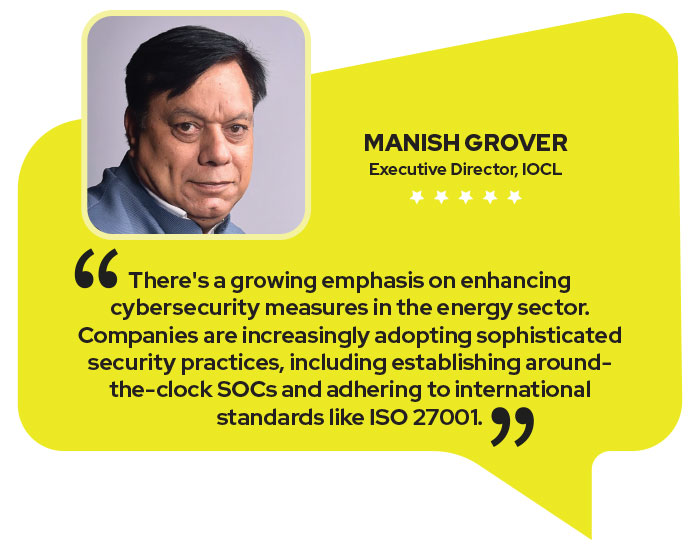
Against this backdrop, Manish Grover, Executive Director, Strategic Information Systems, IOCL, sheds light on the evolving cybersecurity landscape, particularly in the energy sector. He notes,“There’s a growing emphasis on enhancing cybersecurity measures in the energy sector. Companies are increasingly adopting sophisticated security practices, including establishing around-the-clock (SOCs) and adhering to international standards like ISO 27001. This approach encompasses comprehensive vulnerability assessments and penetration testing across various infrastructures and applications. Deploying multi-factor authentication, anti-APT tools, advanced endpoint security, and gateway security tools reflects a proactive stance in safeguarding sensitive data. Furthermore, the shift towards a Zero Trust security model demonstrates a commitment to continuously evolving cybersecurity strategies to address emerging threats,” says Manish Grover.
Elia Zaitsev, CTO of CrowdStrike, emphasizes, “To stop modern adversaries in 2024, the SIEM needs to be rebuilt from the ground up for the SOC around the security analyst experience. The market will dictate a need for solutions that unify all capabilities, including SIEM, SOAR, EDR, and XDR, into one cloud-native, AI-powered platform to deliver better, faster, and more cost-effective outcomes.”
4. Network and infra modernization for future readiness
In 2024, CIOs and technology leaders will continue to prioritize network modernization. As enterprise operations increasingly revolve around cutting-edge technologies such as AI, and the demand for faster connectivity intensifies, relying on outdated networks becomes impractical. The crucial task is to align with networks that not only keep pace with these advancements but also can accommodate the necessary computing power.
Extending the focus from ERP to SaaS upgrades, the emphasis lies on implementing top-notch cloud solutions capable of supporting modern engineering. CIOs will persist in steering their networking and IT infrastructures toward the cloud, enhancing capabilities for seamless navigation across public clouds, data centers, and edge infrastructures cost-effectively.
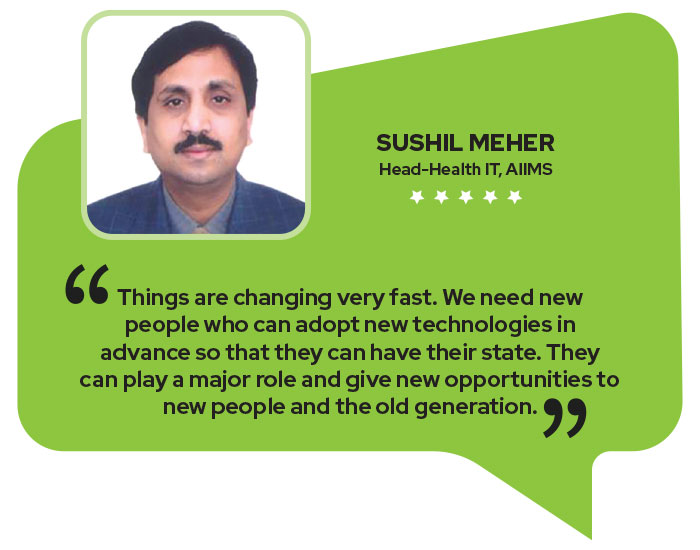
As Deloitte predicts in its recent report on 2024 Tech trends, many companies have experienced subpar transformation programs that amounted to massive bets on a single dimension of their core systems, which ultimately failed to deliver the benefits promises. Instead of undertaking random acts of innovation or “low-hanging” transformation investments, technology leaders may need to face a hard truth: Their technology house is ailing. And they need new ideas for where to focus time and effort so they can begin to heal.
5. Blockchain’s surge for operational efficiency and enhanced security
The blockchain technology market at the global level is developing at a rapid rate, and in the upcoming few years, it is expected to grow significantly.
In 2015, Transparency Market Research revealed that the global market for blockchain technology was worth US$315.9 mn, and the value will surpass US$20 bn by the end of 2024.
While many existing studies have highlighted the implications of blockchain technology on business operations to achieve productivity, sustainability, and resilience, it is pivotal to comprehensively examine which business operations, functions, activities, and sectors will reap the most benefits.
Manish Grover, Executive Director, Strategic Information Systems at IOCL, shared that Indian Oil is currently in the early stages of adopting blockchain technology with a strong commitment to enhancing its operational efficiency and customer service. Their strategic focus areas for exploring blockchain applications include supply chain management, payment security, trade finance streamlining, data protection, and the implementation of smart contracts.

Analytically, these initiatives enable real-time data visibility and insights, reduce fraud risk, optimize time and cost-related key performance indicators, enhance data security, and automate processes, all of which contribute to data-driven decision-making and operational improvements.
6. Enhancing user engagement through immersive experience
Anticipated in 2024 is a significant surge in focusing extensively on enhancing user engagement through immersive experiences. While virtual reality (VR) and augmented reality (AR) are not new concepts, they have transcended their gaming origins to become transformative tools across various industries.
In the retail sector, there is a noteworthy emphasis on leveraging AR and VR technologies for virtual try-ons and product demonstrations, providing an innovative and interactive shopping experience.
From manufacturing to customer interactions, these technologies are revolutionizing how businesses engage with products, services, and the digital realm. A domain witnessing a profound impact is product lifecycle management (PLM).
In manufacturing, the adoption of AR and VR technologies is gaining momentum to strengthen employee training and operational efficiency. These technologies are not only being evaluated for internal purposes but also to assist end customers, like plumbers, in training scenarios. AR and VR facilitate intricate training simulations, reducing material waste and fostering sustainability.
This strategic incorporation of AR and VR in manufacturing reflects a notable shift toward utilizing technology to enhance training effectiveness and optimize resource utilization, showcasing a commitment to innovation and sustainable practices in the industry.
7. Efficiency enhancement in business operations
In 2023, technology leaders were confronted with the challenge of achieving more with fewer resources, a sentiment frequently shared during interactions with CIO&Leader. Organizations felt a growing pressure to optimize their business processes, utilizing various cloud technologies to simultaneously cut costs and foster innovation. In the manufacturing sector, the spotlight has been on smart manufacturing as a key area of focus.
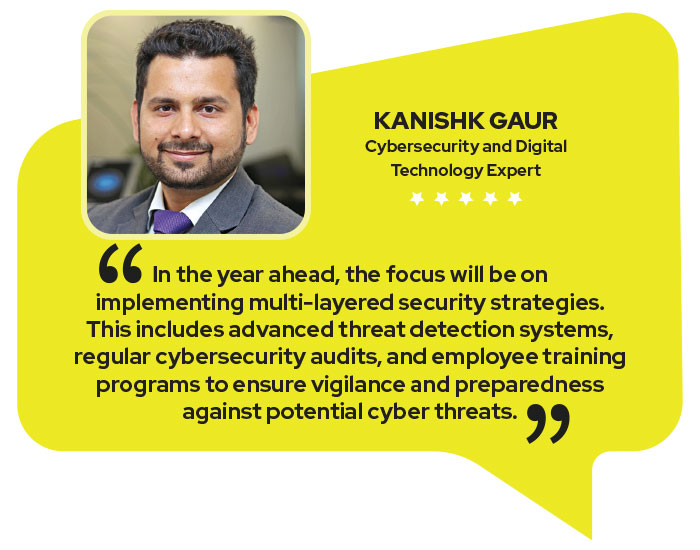
Looking ahead to 2024, an apparent shift toward a pragmatic approach is anticipated in the manufacturing sector. The enthusiastic proclamations about generative AI, the industrial metaverse, reshoring manufacturing jobs, and autonomous vehicles are expected to be tempered by the sobering realities of addressing issues such as technical debt, legislation, and navigating global supply chains.
Pushkar Rege, CIO at UPL, encapsulates this approach, stating, “Smart Manufacturing is crucial for a core manufacturer like us, serving over 55 countries. We are dedicated to focusing on smart manufacturing and privatizing it. It’s a marathon, and we are already partway through the journey. We aspire to be swift followers in this context, leveraging our existing presence in the cloud. While there is considerable hype about the cloud and cost, we view it as a journey we are enthusiastic about and confident in.”
This perspective underscores the commitment to a thoughtful and strategic evolution, acknowledging the complexities of the business landscape while embracing the transformative potential of technology.
8. Significant uptake of enterprise 5G
With more and more workloads moving to the cloud, enterprises prioritize secure network modernization, driving interest in ‘Captive Non-Public 5G Networks.’ The CIOs expect a surge in enterprise 5G trials and projects in 2024.
Harshad Mengle underscores the challenges, noting that while 5G offers faster speeds and lower latency, it introduces new security considerations, requiring robust encryption for data in transit.
Enterprise 5G, with its lowered latency and assured reliability, becomes instrumental in advancing augmented reality, virtual reality, and IoT applications across diverse sectors like healthcare, education, manufacturing, and smart cities. It serves as a crucial infrastructure for various AI workloads.
The distinctive advantage of enterprise 5G lies in its cloud-native technology, specifically its standalone (SA) mode, supported by features like network slicing, end-to-end orchestration, and automation.
Amit Luthra, Managing Director, India, Lenovo ISG, highlights the pivotal role of the fusion of 5G and Edge Computing, overcoming challenges through real-time data processing.
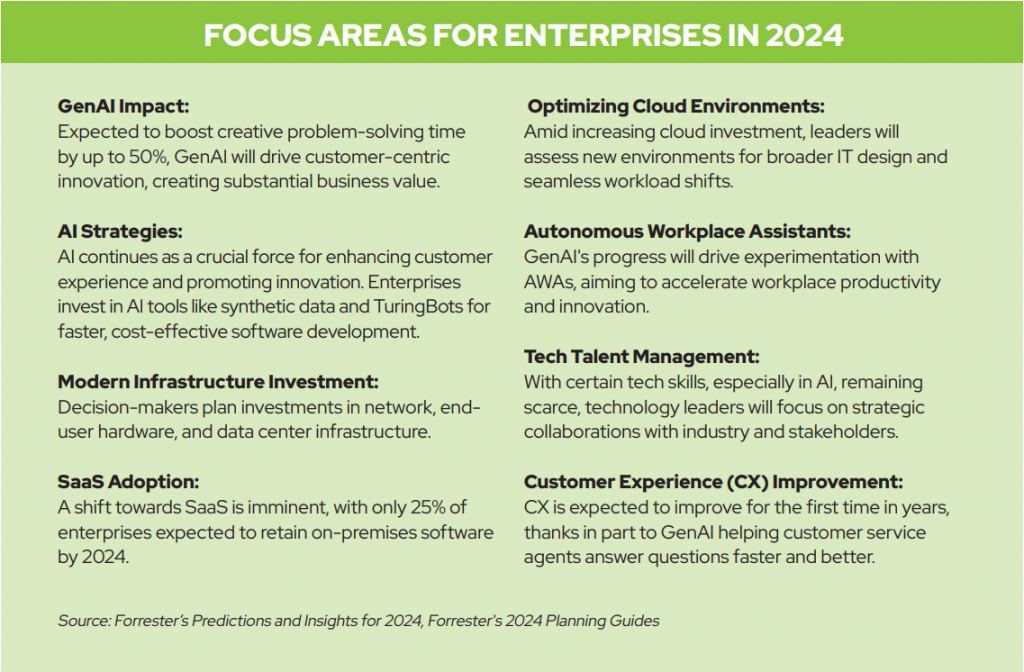
5G will bring a significant shift in security operations
Significant emphasis will be placed on integrating edge computing into enterprise network modernization initiatives, aiming to mitigate latency and elevate overall performance. The dynamic collaboration between 5G and edge computing is poised to unlock novel possibilities across various industries. Sectors such as manufacturing, logistics, and healthcare stand to harness this powerful combination for real-time monitoring, predictive maintenance, and personalized services.
Harshad Mengle underscores the operational intricacies of edge computing, emphasizing the need for a distributed and scalable infrastructure. Effectively managing a network of edge nodes necessitates the adaptation of data center management practices. This involves the implementation of robust security measures, ensuring high availability, and adeptly managing diverse hardware at different locations. In essence, the widespread adoption of edge computing is reshaping the strategic positioning and management of data centers to align with the evolving demands of distributed computing.
In addition, in 2024, CIOs will be directing their attention to critical areas such as spearheading sustainability and ESG initiatives, optimizing data center costs, and maximizing the value derived from their data centers.
